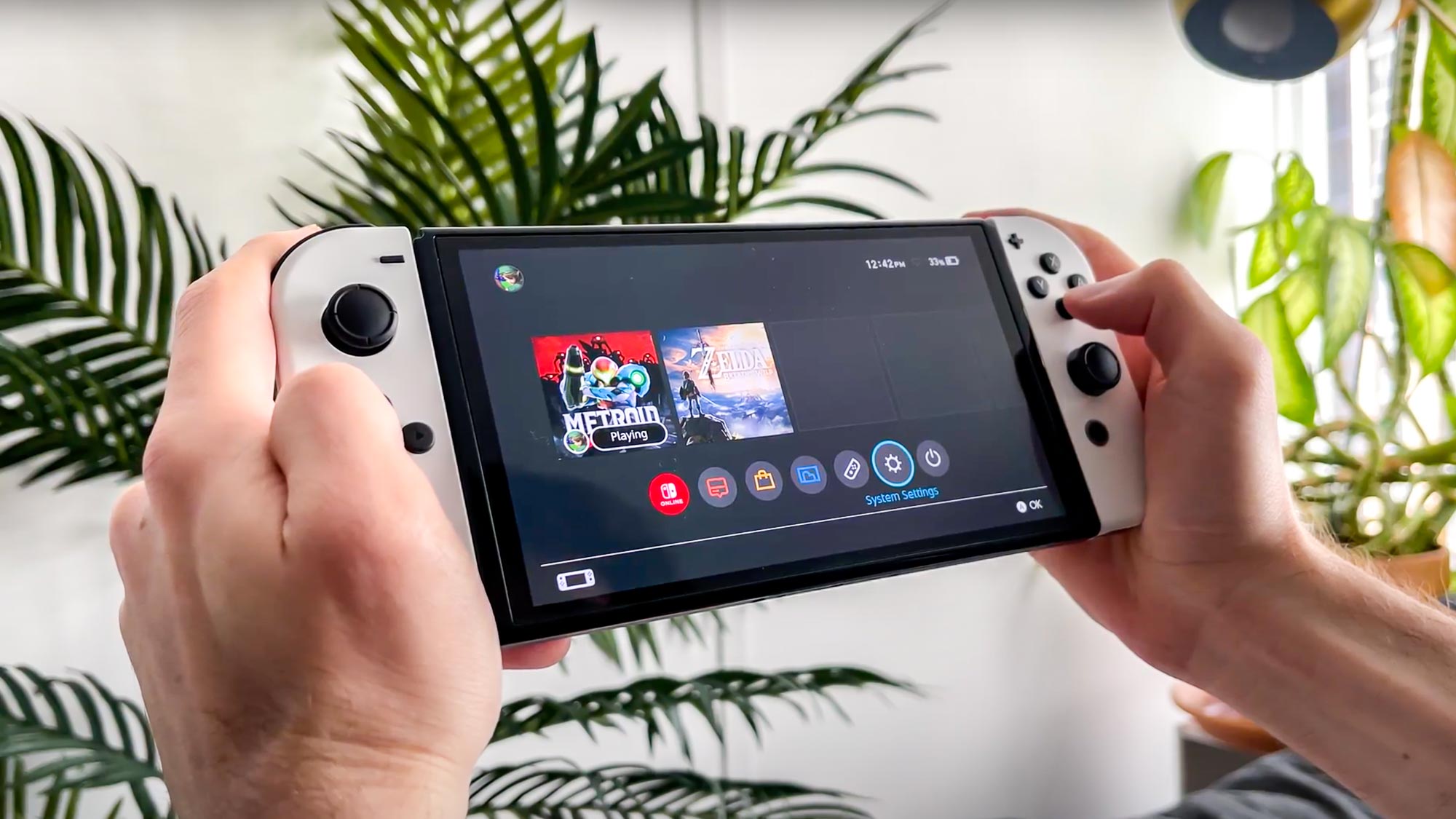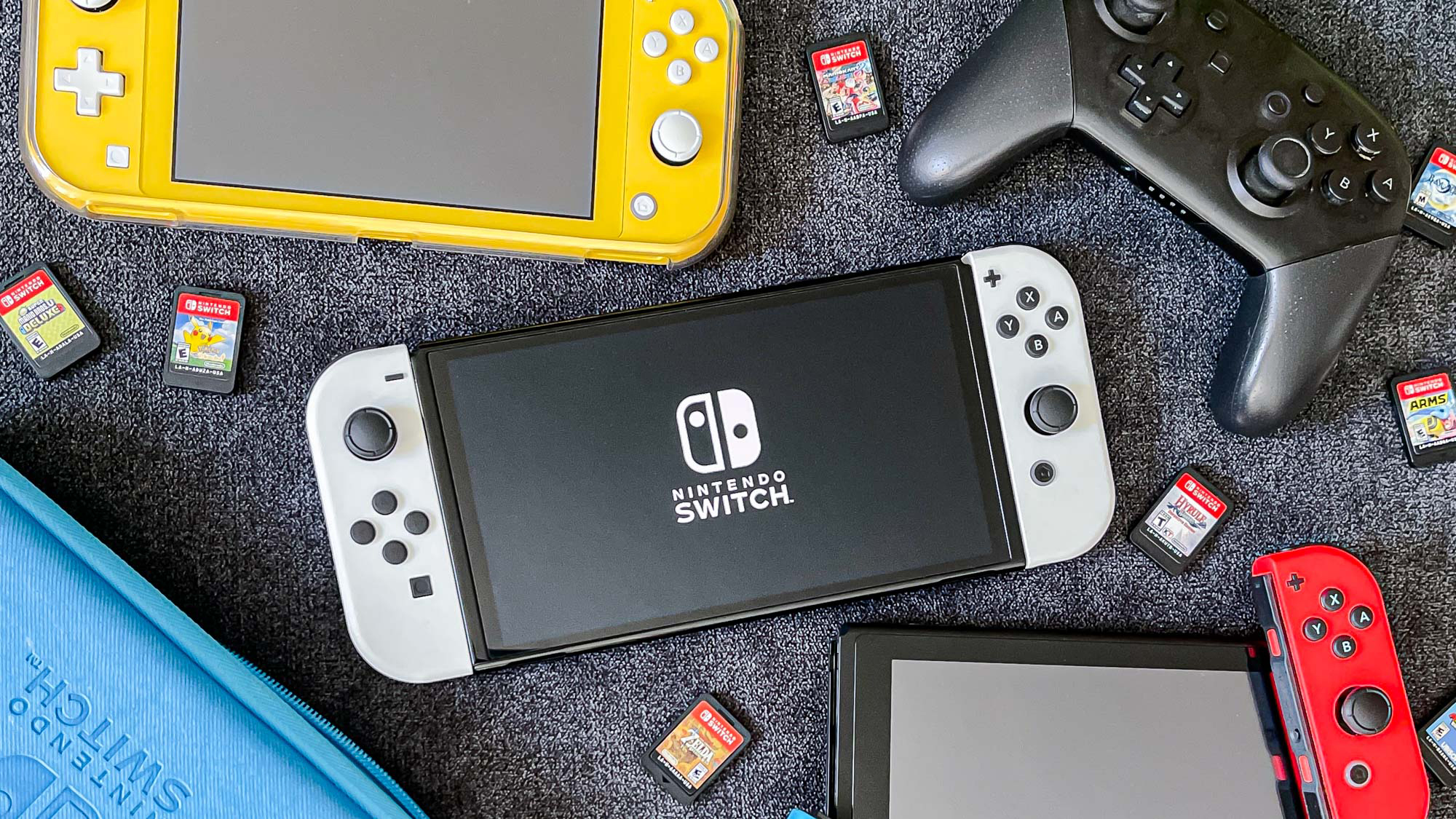Nintendo Switch OLED battery life tested — here’s how it stacks up
The Nintendo Switch OLED may offer a bit more battery life than expected

The Nintendo Switch OLED has a number of advantages over the base-model Switch. In addition to a bigger screen made out of better materials, the Switch OLED sports an improved kickstand, more powerful speakers and an Ethernet port in the dock. However, the Switch OLED has another small advantage that Nintendo hasn’t really discussed: its battery life.
For those who haven’t kept up with the minutiae of Nintendo hardware, the Switch OLED and the base Switch have essentially the same internal components. That includes the 4,210 mAh battery, which can provide between 4.5 and 9 hours of gameplay, according to Nintendo.
- Play the best Nintendo Switch games
- Learn where to buy the Nintendo Switch online
- Plus: Sorry Nintendo fans, the Switch OLED hasn't killed Joy-Con drift
However, while the Switch OLED and the base Switch have the same battery, our tests showed something interesting: The Switch OLED is just a little more efficient. That means the Switch OLED lasts longer on a single charge, which is good news for anyone who managed to get their hands on the new console variant.
Switch vs. Switch OLED: Battery life tested

First and foremost, we should point out that the Switch’s battery life is highly variable. That’s why even Nintendo’s estimate has almost five hours of wiggle room. Different games drain the battery at different rates, depending on how much they tax the screen, the speakers and the internal components. Furthermore, even the same game can drain the battery at different rates, depending on what you’re doing in it. Imagine a game that has both calm, peaceful levels with relatively few assets to render, and frenzied, chaotic levels with tons of assets cluttering up the place. The console might have to expend more power to render the latter.
With that in mind, Tom’s Guide developed a standardized test to evaluate the battery life on four different Switch variants: a Switch OLED, a Switch Lite and two different base-model Switches (In November 2019, Nintendo refreshed the base Switch with more efficient battery life; earlier base model Switches don’t last as long on a single charge.)
We turned each console’s brightness up to 100%, its volume up to 50% and let it run a colorful, high-resolution YouTube video with a lot of motion. This simulates how the Switch might handle a demanding game under real-world conditions. Then, we simply ran a stopwatch to see how long each system lasted.
Nintendo Switch OLED battery life results
| Row 0 - Cell 0 | Nintendo Switch OLED | Nintendo Switch (2019 Model) | Nintendo Switch (Launch Model) | Nintendo Switch Lite |
| Battery Life (Hrs:Min) | 5:00 | 4:40 | 3:28 | 3:19 |
Unsurprisingly, the small Switch Lite had the shortest battery life, clocking in at only 3 hours and 18 minutes. Our well-loved launch model Switch fared only a little better at 3 hours and 29 minutes.
Sign up to get the BEST of Tom's Guide direct to your inbox.
Get instant access to breaking news, the hottest reviews, great deals and helpful tips.
The real horse race was between the 2019 base Switch and the Switch OLED – and this is where we found a surprising result. The base Switch lasted for 4 hours and 40 minutes, while the Switch OLED lasted for 5 hours on the dot.
A hidden benefit
To be fair, both numbers are perfectly in line with Nintendo’s estimates, which peg both the base Switch and the Switch OLED at 4.5 to 9 hours of battery life. It also lines up with our anecdotal testing, in which Metroid Dread ran for about 5 hours on the Switch OLED.
At the same time, the Switch OLED’s better battery life seems counterintuitive. This version of the console has a larger, more vibrant screen and bigger speakers. Shouldn’t those drain more battery than the base model?
The answer is “not necessarily,” thanks to OLED’s unique properties. The Switch OLED’s screen is actually a little less bright than the base Switch’s, but offers better contrast due to deeper blacks and richer colors. While OLED screens have the potential to drain more power than traditional LCDs, they also have the potential to be more energy-efficient, particularly when displaying darker images at low levels of brightness. However Nintendo engineered the OLED screen, it seems to be a little more efficient than its LCD counterpart.
At the same time, our test wasn’t rigorously scientific, so it’s hard to say whether the OLED will have better battery life for every single game, under every single circumstance. Furthermore, the Switch OLED was 7% more efficient in our tests. That equates to an extra 20 minutes for demanding games, and perhaps an extra 35 minutes in less-demanding games, if we extrapolate out. It’s a benefit, to be sure, but a limited one.
Still, if you wanted some hard data about the Switch OLED’s battery life, there you have it. In an apples-to-apples battery test, the Switch offered an hour-and-a-half more battery life than the Switch Lite or launch-model Switch, and 20 minutes more battery life than the current base Switch. It’s probably not worth running out and buying a Switch OLED just for the extra 20 minutes of gameplay, but it’s a nice perk if you’re already committed to getting one.
Marshall Honorof is a senior editor for Tom's Guide, overseeing the site's coverage of gaming hardware and software. He comes from a science writing background, having studied paleomammalogy, biological anthropology, and the history of science and technology. After hours, you can find him practicing taekwondo or doing deep dives on classic sci-fi.

